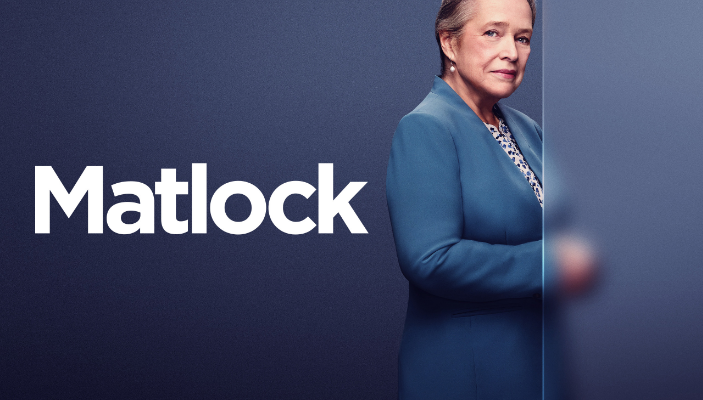Matlock is more than just a courtroom drama from the late 20th century. It’s a symbol of accessible storytelling, moral certainty, and character-driven narratives that captivated millions. First airing in 1986, this legal drama centered around the sharp and soft-spoken defense attorney Ben Matlock, played by Andy Griffith. While some shows are built for hype and headlines, Matlock carved its place through consistency, familiarity, and humanity.
Despite the end of its run in 1995, its reruns still draw loyal viewers. Streaming platforms have reignited interest, helping a new generation appreciate its simplicity and storytelling rhythm. But what exactly makes Matlock still relevant decades later?
The Man in the Gray Suit: Who Is Ben Matlock?
Ben Matlock isn’t your typical flashy TV lawyer. He’s known for his Southern manners, seersucker suit, and down-to-earth personality. A Harvard Law graduate, Matlock charges high legal fees, but his heart beats for justice. Unlike many fictional attorneys who rely on showmanship, Matlock wins cases by paying attention to overlooked details, listening carefully, and asking questions at the right time.
Andy Griffith shaped the character with a careful blend of humor, sincerity, and subtle wisdom. He brought depth without drama, intensity without shouting, and a kind of quiet authority that resonated across different generations of viewers. His character was dependable, morally grounded, and easy to root for.
From Courtroom to Living Room: A TV Staple Across Generations
Matlock premiered in March 1986 on NBC and later moved to ABC, airing until May 1995. Over its nine seasons, it became a fixture in homes across the U.S. Its episodic nature—each episode standing on its own—made it easy to jump in at any point, making it ideal for syndication.
Even after its final episode aired, cable reruns and now streaming services have kept it alive. It didn’t rely on season-long cliffhangers or shocking plot twists. Instead, it created comfort through predictability. For many, it was part of a family evening, watched over dinner or while winding down.
A Formula That Worked: Familiar Yet Fresh
Each Matlock episode followed a familiar rhythm: a crime occurs, an innocent person is accused, Matlock takes the case, investigates, and dramatically reveals the true culprit—usually in the courtroom. While that might sound repetitive, the strength of the show was in how each story was told.
Writers balanced legal procedure with character insights. Supporting roles like investigator Conrad McMasters and attorney Michelle Thomas gave variety to episodes. Side plots about their lives added heart without overwhelming the case.
This balance between structure and creativity allowed Matlock to retain freshness without losing its foundation.
Moral Justice Through Storytelling
What set Matlock apart from many legal shows is its clarity in values. It wasn’t interested in legal gray areas for shock value. Each case reflected core ideas of right and wrong, justice and fairness.
For viewers, the courtroom was less about legal maneuvering and more about truth. The show never felt preachy, but it always aligned itself with ethical behavior, emphasizing personal responsibility, community trust, and redemption.
This clarity helped build emotional investment. Audiences didn’t just want Matlock to win—they wanted justice to prevail.
Cultural Significance Beyond Entertainment
While not groundbreaking in visual effects or fast-paced editing, Matlock was influential in a quieter way. It paved the way for legal dramas that followed, focusing more on the lawyer’s character than courtroom fireworks.
Its influence can be seen in shows like JAG, Law & Order, and The Practice, where the main characters’ ethical compasses are central to the plot.
Pop culture didn’t forget Matlock either. From The Simpsons (where Grandpa Simpson idolizes him) to Arrested Development (where he’s referenced as a touchstone of credibility), Matlock became shorthand for old-school legal trustworthiness.
Crafting the Courtroom: Writing, Direction, and Pacing
Unlike many modern dramas that favor rapid pacing, Matlock focused on clarity. Writers allowed space for the viewer to process clues. Courtroom scenes didn’t rely on theatrics, but logical progression and calm deduction.
Direction was straightforward, rarely experimental, but always effective. It emphasized actors’ expressions, key dialogue beats, and the unfolding mystery rather than visual trickery. This minimalism made the show accessible to all age groups.
Most importantly, the show never insulted the viewer’s intelligence. It expected attention but rewarded it.
Andy Griffith’s Second Act: Re-defining a Career
For many, Andy Griffith was known for The Andy Griffith Show, where he played a small-town sheriff in Mayberry. With Matlock, he redefined himself not just as a nostalgic figure, but as a lead actor with dramatic and comedic range.
This role brought him back into the spotlight, and for many younger viewers of the 80s and 90s, Ben Matlock became their first introduction to Griffith.
He portrayed Matlock with dignity and relatability, never taking the character too seriously, but always giving him respect. That subtle approach contributed to the show’s sincerity.
Matlock in the Streaming Era: Why It Still Works
In a world filled with true crime docuseries, serialized thrillers, and dark anti-heroes, Matlock feels like a pause. On platforms like Pluto TV and Amazon, it’s finding a new rhythm with younger viewers.
Its appeal today lies in its simplicity. There’s no excessive violence, no graphic content, and no manipulative plot twists. It’s clean, thoughtful entertainment that can be enjoyed without stress or second-guessing.
In an era where binge-worthy shows can sometimes overwhelm, Matlock offers an alternative: a satisfying story, solved in under an hour, with characters who feel trustworthy.
Comparing Legal Dramas: How Matlock Stands Apart
Modern legal dramas often emphasize procedural accuracy, character flaws, or high-stakes emotional entanglements. Shows like The Good Wife, Suits, or How to Get Away with Murder dive deep into ambition, betrayal, and political scheming.
Matlock, in contrast, chooses clarity. Its cases are complex but understandable. Its protagonist is principled rather than tormented. And it favors emotional stability over chaos.
This distinction gives Matlock a timelessness. It may not have the flash of newer series, but it offers something increasingly rare: peace of mind through honest storytelling.
Not Just a Legal Drama: It’s About People
While courtroom scenes drive each episode, the show constantly returns to interpersonal connections—between Matlock and his clients, staff, and community.
Themes of family, integrity, loyalty, and compassion underpin every case. Even those accused of crimes are presented as fully human—flawed, misunderstood, or manipulated—rather than just guilty or innocent.
This people-first approach creates emotional richness. Viewers come for the legal puzzle but stay for the way the show affirms shared values.
A Legacy Worth Studying: Why Matlock Still Matters
Matlock’s legacy isn’t just that it lasted long or reruns well—it’s that it stuck to what it did best. It was consistent, respectful to its audience, and centered around decency. In a changing media landscape, that kind of consistency is rare.
TV producers and writers can still learn from Matlock. Characters matter. Simplicity works. Moral clarity can be compelling. And storytelling, when rooted in real emotions, transcends time.
Even as television evolves, Matlock reminds us that quality content doesn’t always mean complexity—it can simply mean sincerity.
Conclusion: The Timeless Nature of Good Storytelling
Matlock remains a classic not just because of nostalgia, but because of how it made viewers feel. It created a reliable world, anchored by a trustworthy lead, where justice prevailed and stories had meaning.
Its slow-burning charm, relatable characters, and thoughtful pacing give it staying power. And in a world saturated with media, that kind of authenticity is not just welcome—it’s needed.
As long as audiences look for stories that reflect fairness, logic, and a bit of warmth, Matlock will continue to find its way into homes and hearts.
❓ FAQs
1. Who played Matlock?
Andy Griffith played the role of Ben Matlock across all nine seasons.
2. Where can I watch Matlock today?
You can stream it on Pluto TV, Amazon Prime Video, and sometimes on cable networks like MeTV.
3. Is Matlock based on real events or a real lawyer?
No, the character is fictional, but inspired by traditional Southern values and the courtroom genre.
4. What makes Matlock different from other legal shows?
Its emphasis on moral clarity, character-driven plots, and a calm tone set it apart from fast-paced modern dramas.
5. Why is Matlock still popular?
Its timeless values, comforting format, and Andy Griffith’s performance keep it engaging for both old fans and new viewers.

